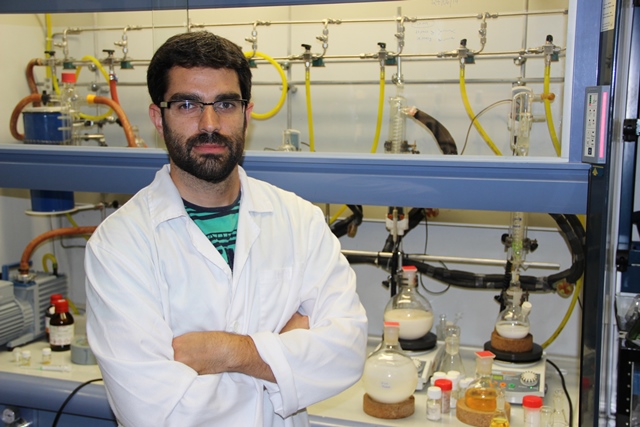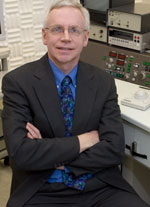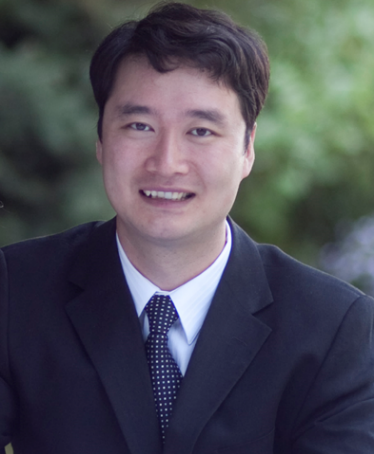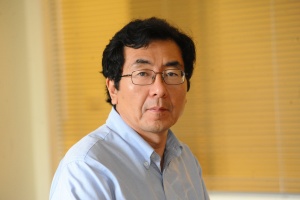Meeting Program — March 2018

Manuel Moliner
Tenured Scientist, Instituto de Tecnología Química (UPV-CSIC)
Universidad Politécnica de Valencia,
Consejo Superior de Investigaciones Científicas
Abstract — On the one hand, the preparation of different zeolites, i.e. Beta and ZSM-5, in their nanosized forms with controlled Si/Al molar ratios (~15–30), high solid yields (above 90%), and homogeneous crystal sizes (~10–25 nm), has been achieved by using simple bifunctional alkyl-substituted mono-cationic cyclic ammonium cations as OSDA molecules [1]. These OSDAs combine a cyclic part and a short alkyl-chain group (preferentially C4) and, depending on the size and nature of the cyclic fragment, the crystallization of different zeolites can be controlled. The catalytic properties of the achieved nanosized zeolitic materials have been evaluated for the methanol-to-olefins and olefin oligomerization reactions [1].
On the other hand, the efficient synthesis of the small-pore CHA and AEI zeolites with nanosized crystals (20—50 nm) has also been obtained following zeolite-to-zeolite transformation procedures, where high-silica FAU materials have been used as silicon and aluminum precursors [2]. The nanosized small pore zeolites have been evaluated for the methanol-to-olefin reaction, observing that their catalyst lifetimes are remarkably longer than the catalyst lifetimes observed for conventional small pore zeolites. In addition, the selectivity towards different light olefins, i.e. propylene and/or ethylene, can be maximized depending on the crystalline structure of the nanosized zeolites.
References:
- (a) E.M. Gallego et al., Chem. Sci., 2017, 8, 8138.; (b) M.R. Díaz-Rey et al., ACS Catal., 2017, 7, 6170.
- N. Martín et al., Chem. Commun., 2016, 52, 6072.
Biography — Manuel Moliner obtained his B.S. degree in Chemical Engineering at the University of Valencia (Spain) in 2003, and completed his Ph.D. at the Polytechnic University of Valencia (UPV, Spain), in Chemistry, under the guidance of Prof. Avelino Corma in 2008. Afterward, he completed a two-year postdoc (2008–2010) with Prof. Mark Davis at the California Institute of Technology (Caltech, USA).
He is a Tenured Scientist of the Spanish National Research Council (CSIC) since 2014, where his research lies at the interface of heterogeneous catalysis and materials design.
Manuel Moliner has published 70 papers in international journals, and is co-inventor of 24 international patents (14 transferred to industry). He has received different national and international awards, as the “EFCATS Thesis Award” to the best Ph.D. Thesis in Europe in 2007–2009, the “TR-35 Spain 2011” awarded by MIT to young talents in Spain under-35, or the “FISOCAT 2014” to young scientists under 40 in Latin America.

 Abstract — In this presentation, I will pay tribute to the late Robert K. Grasselli, a truly extraordinary scientist who served as a dedicated mentor to many industrial scientists and engineers, as well as a number of academics, such as myself. The primary focus of his research was on improving generations of complex oxide catalysts for production of acrylonitrile by ammoxidation of propylene through much of his career, and of propane in the later years. The Sohio chemical catalysis group, which Grasselli lead for many years, succeeded in developing and steadily improving the revolutionary SOHIO process for using multicomponent bismuth molybdates to produce a 50-fold increase in production of acrylonitrile, a platform chemical used for making synthetic fibers and ABS plastics. He became Senior Science Fellow at the Sohio Company in Cleveland, and ended his career there in 1985 after about 25 years of service. This was followed by 3 years as Director of the Chemistry Division at the Office of Naval Research. From there, he moved to Mobil Research and Development Corporation in Princeton, where he worked until 1995.
Abstract — In this presentation, I will pay tribute to the late Robert K. Grasselli, a truly extraordinary scientist who served as a dedicated mentor to many industrial scientists and engineers, as well as a number of academics, such as myself. The primary focus of his research was on improving generations of complex oxide catalysts for production of acrylonitrile by ammoxidation of propylene through much of his career, and of propane in the later years. The Sohio chemical catalysis group, which Grasselli lead for many years, succeeded in developing and steadily improving the revolutionary SOHIO process for using multicomponent bismuth molybdates to produce a 50-fold increase in production of acrylonitrile, a platform chemical used for making synthetic fibers and ABS plastics. He became Senior Science Fellow at the Sohio Company in Cleveland, and ended his career there in 1985 after about 25 years of service. This was followed by 3 years as Director of the Chemistry Division at the Office of Naval Research. From there, he moved to Mobil Research and Development Corporation in Princeton, where he worked until 1995.

